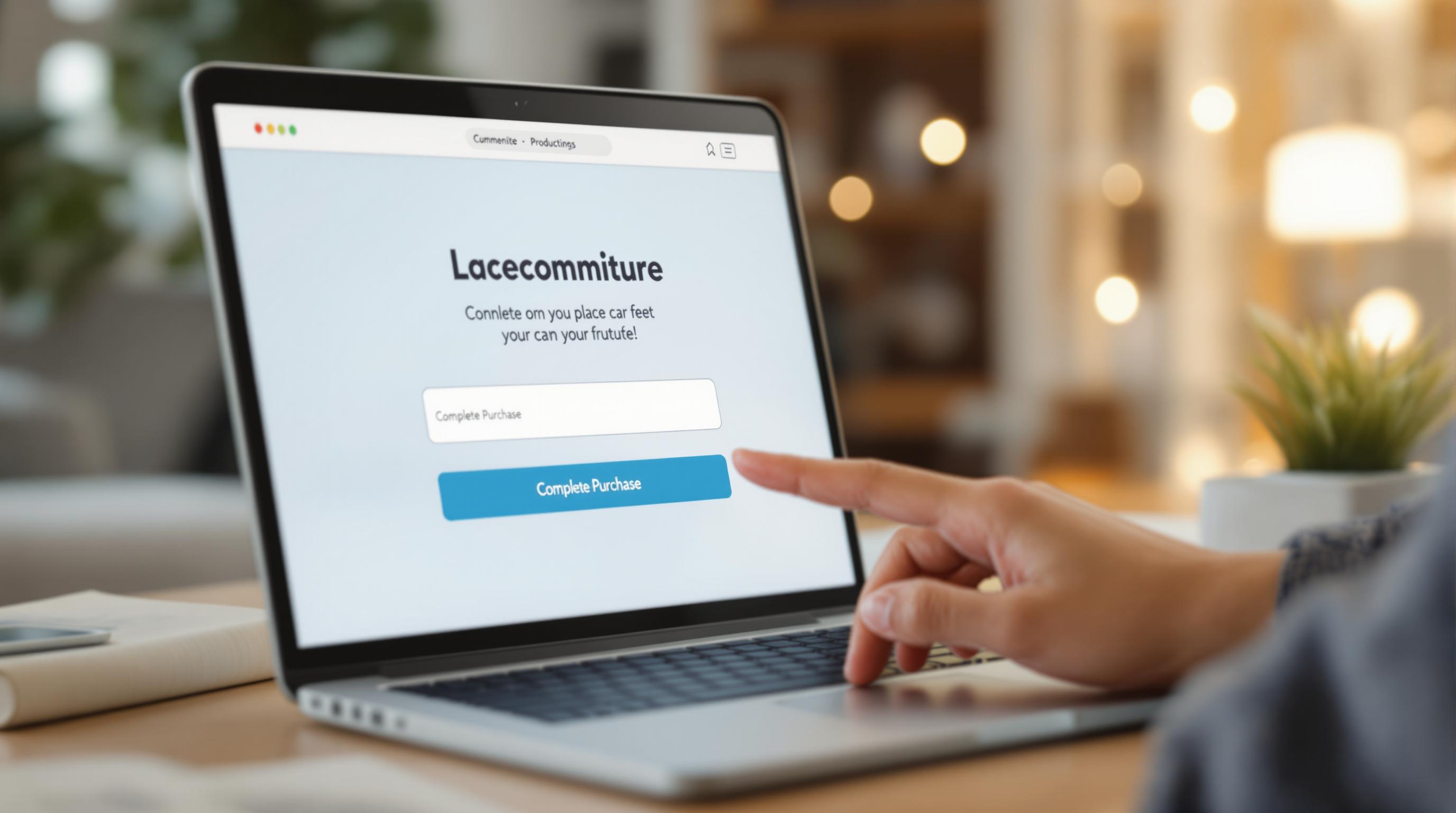Content gap analysis is a process to find missing opportunities in your website’s content compared to competitors or market needs. It helps improve search rankings, meet audience expectations, and outperform competitors by addressing gaps in:
- Keywords: Terms competitors rank for, but you don’t.
- Topics: Subjects your site lacks or doesn’t cover well.
- Media: Formats like videos or infographics that engage users.
Why It Matters:
- Boost Search Rankings: Filling gaps improves visibility.
- Meet Audience Needs: Create content that answers questions and solves problems.
- Outperform Competitors: Target areas they’ve missed.
How to Do It:
- Set Goals: Define what you want to achieve (e.g., traffic, conversions).
- Review Current Content: Identify underperforming or outdated pages.
- Analyze Competitors: Use tools like Semrush or Ahrefs to spot opportunities.
- Identify Keyword Gaps: Find terms you’re missing.
- Take Action: Update existing content and create new material to fill gaps.
By regularly conducting content gap analysis, you can stay ahead of market trends, improve your content strategy, and drive better results for your business.
How to Do an Effective Content Gap Analysis for SEO
Why Content Gap Analysis Matters
Content gap analysis helps improve search performance, addresses audience needs, and identifies competitor weaknesses, driving better business results.
Boost Search Rankings
By identifying opportunities, content gap analysis can improve your search visibility. For instance, ScrapingBee tapped into recurring Reddit discussions about IP bans, resulting in a 45% lead increase within six months . Similarly, a B2B SaaS company focused on "CRM to ERP integration for manufacturing", which led to a 40% increase in organic traffic and a 25% boost in conversion rates .
Meet Audience Needs
When you understand what your audience wants, you can create content that resonates. Matas Dūda from Omnisend shares:
"Listen to your audience even when they're not saying things outright. At Omnisend, we go beyond reading product and service reviews and look for recurring questions in live chat support conversations and client calls with our customer success managers. This always reveals issues our content doesn't answer thoroughly."
Beehiiv noticed that existing guides on newsletter monetization lacked actionable advice for beginners. In response, they created detailed, step-by-step content, which led to a 69% increase in new visitors, a 45% improvement in time spent on their site, and stronger long-term credibility . These efforts not only meet audience expectations but also expose competitors' shortcomings.
Find Competitor Gaps
Sean Begg Flint, founder of Position Digital, emphasizes:
"One best practice we swear by is focusing on search intent over just keyword volume. It's easy to get caught up chasing high-volume keywords, but if the intent doesn't match your content, you'll struggle to convert that traffic. We segment our keyword research into informational, navigational, and transactional buckets and align each piece of content accordingly. For B2B clients, we often find that highly specific, lower-volume keywords drive better leads because they target prospects who are closer to making a purchase decision."
To maximize competitor analysis, you can update outdated pages, repurpose existing content into different formats, prioritize keywords with buying intent, and target opportunities that can deliver quick results .
5 Steps to Complete a Content Gap Analysis
Set Goals and Understand Your Audience
Before diving into keyword research, make sure you have clear objectives for your content. Are you aiming to boost organic traffic, increase conversions, or establish yourself as an industry leader? Knowing your goals will guide your strategy.
Pay attention to search intent rather than just chasing high-volume keywords. Think about where your audience spends their time online - industry forums, social media, or even customer support channels. These spaces often reveal the questions and challenges your audience faces, uncovering content gaps that keyword research alone might overlook.
Once you've identified your audience's needs, take a closer look at your existing content to find areas that need improvement.
Review Your Current Content
Use tools like Google Search Console to see which queries are already bringing visitors to your site . Look for pages that are underperforming, outdated, or missing important details. This will help you identify areas where your content could be more effective.
Analyze Competitor Content
Check out what your competitors are doing well to uncover opportunities they might have missed. Tools like Semrush's Keyword Gap or Ahrefs' Content Gap can help you compare domains and spot keyword opportunities .
For example, Warby Parker entered the eyewear market by addressing a major gap: consumers found buying glasses too expensive and inconvenient. They introduced affordable online options with a home try-on feature, solving a key problem and carving out a strong position in the market .
Identify Keyword Gaps
Leverage specialized tools to pinpoint keyword opportunities:
| Tool | Purpose | Key Advantage |
|---|---|---|
| Google Search Console | Performance tracking | Reveals actual queries driving traffic |
| Semrush Keyword Gap | Competitor analysis | Highlights missed keyword opportunities |
| AnswerThePublic | Question-based research | Offers affordable search insights |
| Seed Keywords | Audience-driven research | Gathers direct input from your audience |
These tools will help you uncover gaps, giving you a roadmap for your next steps.
Build Your Action Plan
Once you've identified opportunities, prioritize them based on:
- Business impact: Focus on topics that align with your revenue goals.
- Resources needed: Consider your time and budget.
- Competition: Assess how tough it will be to rank for specific keywords.
- Search intent: Make sure your content addresses what users are actually looking for.
Incorporate feedback directly from your audience whenever possible. Then, create a content calendar that targets the gaps you've identified. Aim to produce content that offers more depth and value than what your competitors provide.
sbb-itb-d7fe25c
Put Your Analysis to Work
Now that you've identified content gaps, it's time to take action.
Update Existing Content
Focus on improving pages that rank between positions 5–15 for quick results. Here's how you can enhance them:
- Add relevant keywords from your gap analysis.
- Use clear headings and better formatting to improve readability.
- Include new media like images or infographics to make the content more engaging.
- Fix broken links and add reliable, high-quality sources.
"You should conduct a content gap analysis at least once a year to make sure your content strategy is in line with business goals, market changes, and audience needs. For industries and topics that are fast-evolving, you may need to conduct content gap analyses more frequently, such as on a quarterly basis." - Kennedy Martinez, Content Director at Hurrdat Marketing
Companies that transform their existing content into step-by-step resources have reported up to a 69% increase in new visitors from these updates .
Plan New Content
After updating your pages, tackle the remaining gaps by creating fresh content. Keep these factors in mind:
| Content Type | Best Use Case | Impact Potential |
|---|---|---|
| Blog Posts | Quick answers to specific questions | High traffic generation |
| Guides/Whitepapers | In-depth topic coverage | Lead generation |
| Videos/Infographics | Explaining complex topics | Enhanced engagement |
| Case Studies | Demonstrating proof of concept | Building trust |
Focus on producing content that matches your brand's voice and meets audience expectations.
Track and Adjust
Once you've refreshed and created content, monitor its performance to fine-tune your strategy. Use these metrics to measure success:
- User behavior: Bounce rate, time on page, pages per session.
- SEO performance: Keyword rankings, organic traffic.
- Conversions: Leads, sales, sign-ups.
- Engagement: Social shares, comments, backlinks.
Some businesses have seen a 50% increase in website traffic in just two months by optimizing their content strategically . Tools like Google Analytics can help you track progress and make data-driven adjustments based on user behavior and engagement patterns .
Solve Common Analysis Problems
After laying out your action plan, it's equally important to address common stumbling blocks in the analysis process. Even seasoned marketers encounter challenges during content gap analysis. Tackling these issues can help you integrate your findings more effectively into your overall strategy.
Data Accuracy Issues
Relying on inaccurate or outdated data can lead your content strategy astray. To ensure precision, draw from up-to-date audience insights and multiple reliable data sources. Here's a quick breakdown:
| Challenge | Solution | Impact |
|---|---|---|
| Outdated Audience Data | Collaborate with sales teams for fresh insights | Create content that resonates better |
| Biased Competitor Data | Cross-check with multiple data sources | Gain a stronger competitive edge |
| Invalid Query Results | Leverage AI-based search tools | Improve data reliability |
| Limited Search Filters | Balance inclusivity and relevance | Cover a wider range of topics |
Intent Mismatch Problems
A common mistake is creating content that doesn't match what your audience is actually searching for. According to research by Hurrdat Marketing, many companies focus too much on competitor content and fail to address their unique audience's needs .
Methodology Mistakes
Errors in your approach can derail even the best data. Avoid these pitfalls:
- Short-term Thinking: Aim for long-term growth rather than quick wins.
- Inconsistent Process: Standardize your approach to improve accuracy and ROI .
- Over-competition Focus: Concentrate on highlighting your unique strengths instead of obsessing over competitors .
Technical Challenges
Technical issues can disrupt your analysis. Here's how to address them:
- Use spell-checkers to catch minor errors.
- Apply machine learning for handling complex queries.
- Regularly review and update your query pipeline conditions.
- Implement "Did You Mean" suggestions for misspelled searches .
Resource Constraints
When resources are tight, focus on strategies that deliver the most impact:
- Prioritize fixing high-impact gaps first.
- Refresh and optimize existing content before creating new material.
- Use automation tools to save time.
- Set achievable deadlines to avoid burnout .
Next Steps for Your Business
Using insights from your content gap analysis, it's time to take action. Focus on areas where updates and new content can make the biggest impact.
Set Clear Implementation Priorities
Develop a plan that balances quick results with long-term growth. Start by targeting high-traffic keywords where your content is underperforming . Update your existing content with these actions in mind:
| Priority Level | Action Item | Expected Impact |
|---|---|---|
| High | Update metadata and optimize keywords | Boost search rankings |
| Medium | Add visuals and improve formatting | Increase user engagement |
| Low | Build strong backlinks | Strengthen domain authority over time |
Establish a Regular Review Cycle
Schedule regular reviews of your content gap analysis - quarterly for fast-changing topics or at least annually for others. This keeps your strategy aligned with business goals . Regular updates ensure you're staying on track and adapting to shifts in your industry or audience behavior.
Track Your Progress
Keep an eye on these key metrics to measure success:
- Organic Traffic: Monitor changes in search visibility.
- User Engagement: Check metrics like time spent on the page and bounce rates.
- Conversion Rates: Evaluate how content updates impact revenue.
- Keyword Rankings: Track improvements for your target terms.
If you’re looking for professional help, BrightSide SEO (https://brightsideseo.com) offers content gap analysis as part of their SEO services. Their team combines keyword research, competitor analysis, and performance tracking to help you uncover and act on content opportunities. This ensures your strategy stays aligned with business goals and delivers a solid return on investment.


